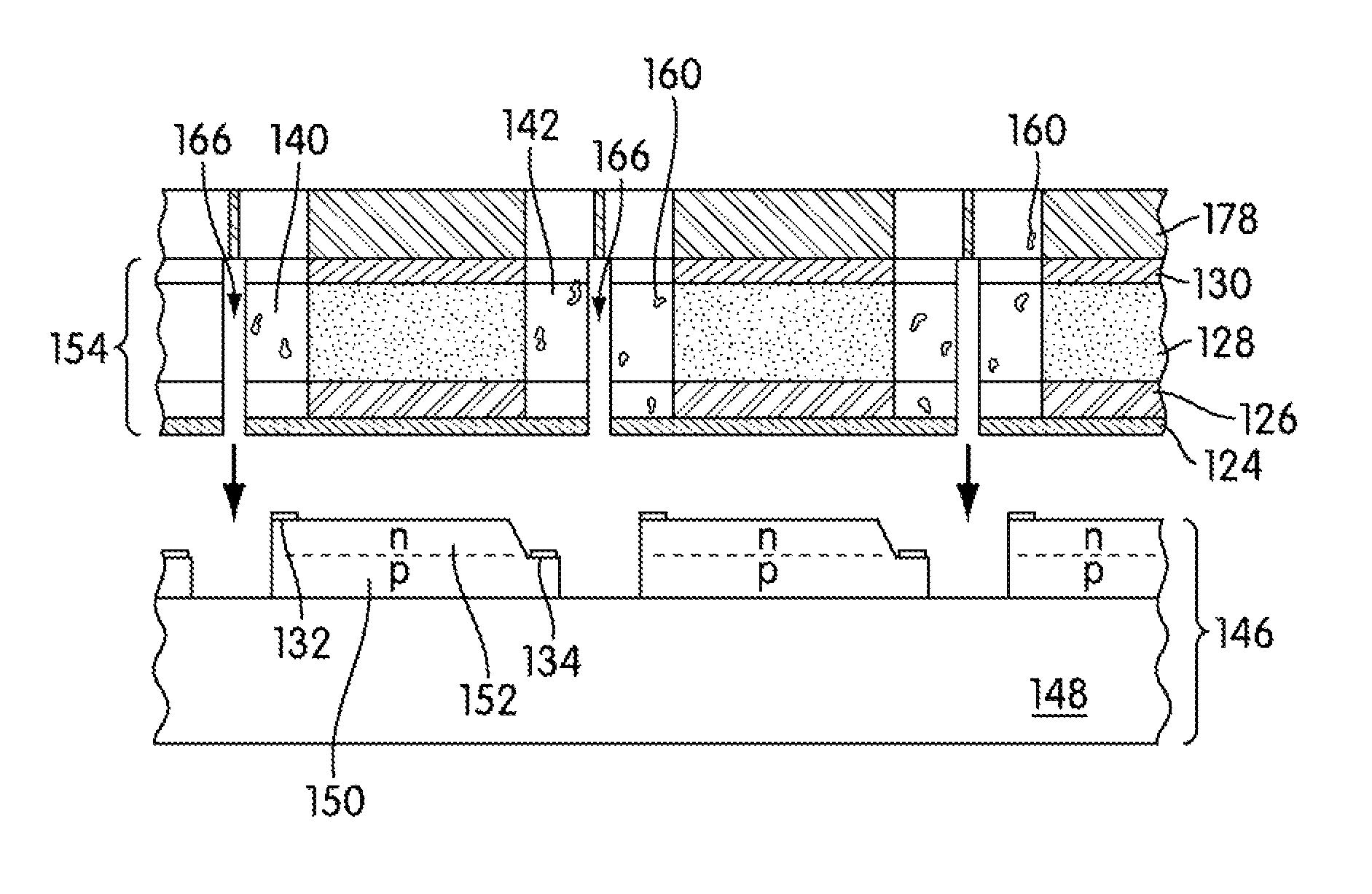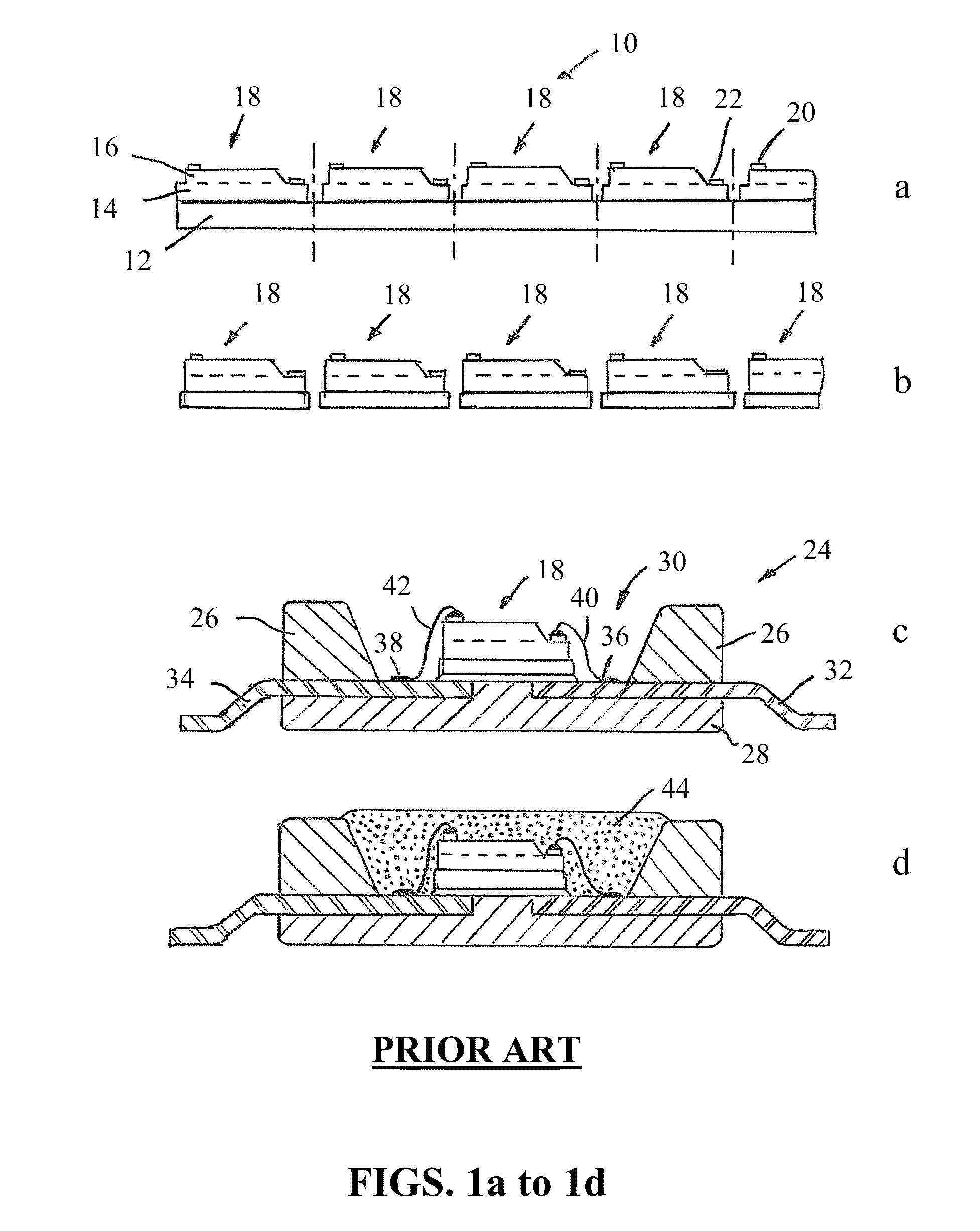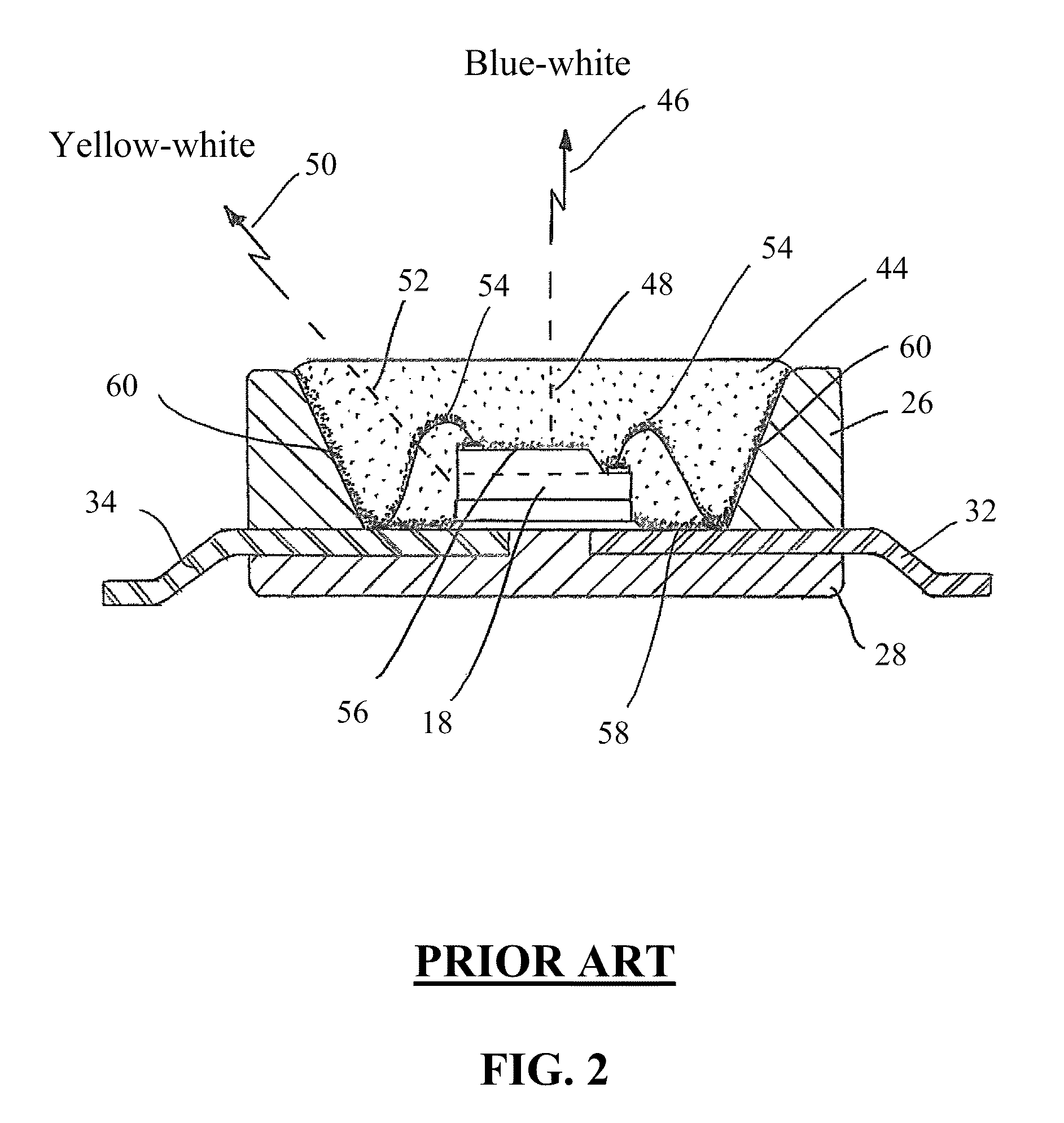Manufacture of light emitting devices with phosphor wavelength conversion
a technology of light emitting devices and manufacturing methods, applied in the direction of basic electric elements, semiconductor devices, electrical equipment, etc., can solve the problems of color/cct variation compounding, color/cct variation can become a significant problem, and the method of manufacture is cost, so as to reduce or even eliminate the need for binning packaged devices
- Summary
- Abstract
- Description
- Claims
- Application Information
AI Technical Summary
Benefits of technology
Problems solved by technology
Method used
Image
Examples
Embodiment Construction
[0048]Embodiments of the invention concern methods of manufacturing a light emitting device with phosphor wavelength conversion and in particular methods of applying / processing the phosphor material on an LED wafer prior to division of the wafer into individual LED chips. More particularly the method concerns patterning of the phosphor material to enable electrical connections to be made to the LED chip's electrode contacts once the wafer is subsequently divided into individual LED chips. The term “LED wafer” refers to a wafer (substrate) on which the LED chips are fabricated by depositing layers of n-type and p-type semiconductor materials. This is to be contrasted with a wafer (substrate) onto which individual LED chips are mounted post fabrication.
[0049]In this specification like reference numerals are used to denote like parts. FIG. 3 is a schematic sectional view of a white light emitting device 100 with phosphor wavelength conversion in accordance with the invention. The devic...
PUM
| Property | Measurement | Unit |
|---|---|---|
| wavelength | aaaaa | aaaaa |
| wavelength | aaaaa | aaaaa |
| thickness | aaaaa | aaaaa |
Abstract
Description
Claims
Application Information
 Login to View More
Login to View More - R&D
- Intellectual Property
- Life Sciences
- Materials
- Tech Scout
- Unparalleled Data Quality
- Higher Quality Content
- 60% Fewer Hallucinations
Browse by: Latest US Patents, China's latest patents, Technical Efficacy Thesaurus, Application Domain, Technology Topic, Popular Technical Reports.
© 2025 PatSnap. All rights reserved.Legal|Privacy policy|Modern Slavery Act Transparency Statement|Sitemap|About US| Contact US: help@patsnap.com



